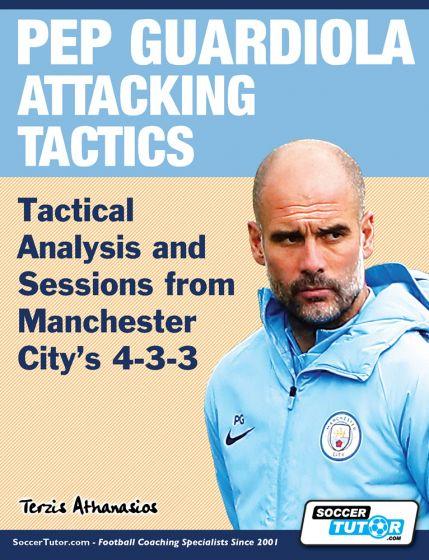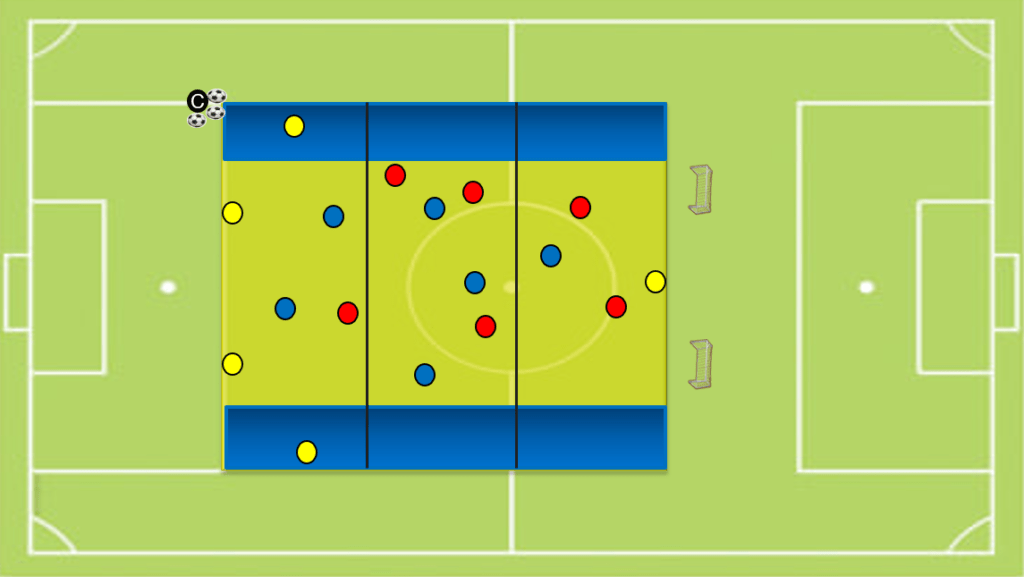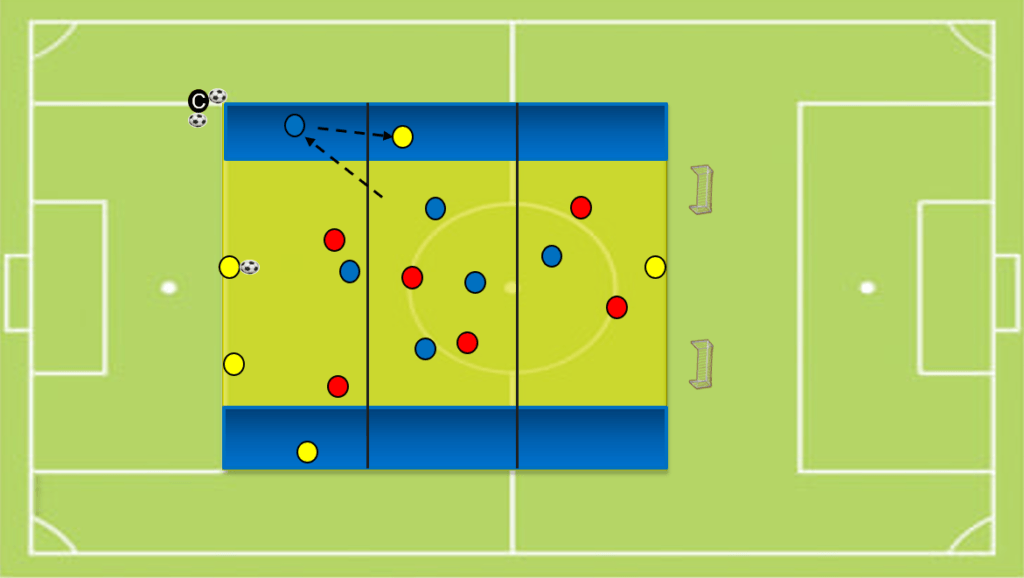The Build up concept
Build up from the back is usually a characteristic of teams who wish to have control of the game through ball possession. Roberto De Zerbi, one of the most fascinating coaches now in Europe, is heavily using deep full-backs as a way to attract pressure, and progress forward through the thirds.

Elevate Your Coaching Journey
Are you ready to take your coaching career to the next level? Look no further than FootballCoach365, your ultimate destination for top-notch coaching and mentoring services.
Join the FootballCoach365 community today and experience the transformative power of coaching and mentoring.
Modern full back in football typically refers to the full-backs who play deeper on the field, often adopting a more defensive or ball-possession role. Instead of pushing forward to join the attack, deep full-backs focus on providing defensive stability and support to the center-backs in their defensive or build-up role.
To better understand the deep full-back one can imagine the opposite of Roberto Carlos, a former full back of Real Madrid whose player was always occupying the left-side wide area and his main responsibility was to run up and down the line for mainly attacking purposes. More recent examples are Aaron Wan Bissaka of Manchester United and Reece James of Chelsea.
On the other hand, there is another type of players who manage to combine the deep-playing fullback position with the more attacking-minded behavior. Such an example is Joao Cancelo, who currently plays for Barcelona, who can get involved in the possession phase in the build-up and middle third but also attack more advanced areas.
They are crucial in preventing opposition wingers or forwards from exploiting the wide areas and creating goal-scoring opportunities. These players are skilled in both defensive and positional play, as their primary responsibility is to protect their own goal while occasionally contributing to the attack when the opportunity arises.
Example of deep full-backs
- Joshua Kimmich (Bayern Munich): Kimmich is known for his versatility but often plays as a deep-lying right-back. Kimmich is known for his versatility but often plays as a deep-lying right-back. He made his debut under Pep Guardiola and his time in Bayern Munich and since then has been a valuable member of the team. He combines defensive solidity with excellent ball distribution. He combines defensive solidity with excellent ball distribution. Another example from Guardiola’s era in Bayern was Philipp Lahm.
- Andrew Robertson (Liverpool): Andy Robertson, the left-back for Liverpool, is known for his defensive prowess and ability to contribute to the attack when needed. Under Jurgen Klopp, Robertson has become one of the best full backs in the world able to attack and defend with the same efficiency.
- Trent Alexander Arnold (Liverpool): Alexander-Arnold is a right-back known for his exceptional crossing ability and playmaking skills. While he can be involved in the attack, he also fulfills defensive duties effectively.
- Kyle Walker (Manchester City): Walker, a right-back, is known for his pace, defensive solidity, and ability to contribute offensively when required. He provides a good balance between attacking and defensive responsibilities. In his first seasons with Man City, Walker had a role similar to Dani Alves during his playing time with Barcelona, which was to occupy the right wide area.
Using Positional and Possession Games
Using positional games in training is a great way to pass important messages on where are the free spaces, who are the free players, apply the Third Man concept, using short passes and some individual fundamentals such as support, body profile, receive with the back foot, etc.
Check this article or understand what is a Positional Game and what are the differences between a possession game “Possession Games and Positional Games – The 2 unique types of drills“
Read also the article “The position of modern full backs in football” to understand the different positions of the full-backs in modern soccer and the difference in their tactical behavior.
Table of Contents
Disclosure: Please note that some of the links below are affiliate links and at no additional cost to you I will earn a commission. Know that I only recommend products services and brands I have personally used and stand behind. When you use one of my affiliate links, the company compensates me, which helps me run this blog and keep my in-depth content free of charge for readers (like you). Read our disclosure for more info.
PEP GUARDIOLA ATTACKING TACTICS – TACTICAL ANALYSIS AND SESSIONS FROM MANCHESTER CITY’S 4-3-3

Attacking Tactics from Manchester City’s 4-3-3
- Overcoming the Pressing of the Opposing Forwards
- Positioning and Rotations with Inverted Full Backs
- Creating and Exploiting Overloads in Wide Areas
- Attacking Options when the Overload Out Wide is Blocked
- Moving the Ball Wide and Receiving in Behind the Full Back (or Create Space for Inside Pass)
- Combination Play Out Wide when the Overload is Blocked
- Stretching the Opposition’s Defence and Switching Play
- Attacking Options when the Attacking Midfielder Receives Between the Lines
- Exploiting Space Created when the Opposing Centre Back Pushes Out to Press the Ball
- Attacking Through the Centre with the Forward Dropping Back to Receive
- Switching Play to the Weak Side when the Overload is Blocked Against the 4-3-3
- Attacking Against a Back 5
Positional Role of Full-Backs
- Full backs typically have three main positions during the attack:
- Wide and High: Positioned near the touchline, providing width and stretching the opponents.
- Wide and Deep: Positioned deeper, closer to the center backs, to offer passing options, stretch the opposition’s pressing lines, create gaps for vertical passes between the lines, and maintain possession.
- Inverted (Inside Position): Occasionally, full backs move inside, creating overloads in central areas.
Importance of Deep Full-Backs
- Compared to other strategies (such as using a back three), having deeper full-backs allows midfielders to stay between the lines.
- This positioning offers passing options higher up the pitch and centrally, helping in ball progression.
In-Possession Responsibilities:
- Width and Stretching Opponents: Deep full backs provide width on the first line of build-up, forcing opponents to cover more ground.
- Positional Changes: Players can enter wide zones, while full backs push forward to maintain width.
- Vertical Play: When gaps appear, full-backs can play vertically to exploit spaces.
- Individual Fundamentals: Focus on body profile, receiving with the back foot, movement without the ball, and support.
Building up with deep full-backs requires coordination and understanding among players. It’s a dynamic approach that adapts to the game situation and the opponent’s tactics.
Description
A directional positional Game 6 v 6 + 5 neutrals. The aim of the team in possession is to move the ball from the 2 center backs to the final zone and score in the small gates.

Rules
- The ball must pass from all the zones
- If the defending team recovers the ball, they must complete 3 passes and then change positions with the attacking team. The game restarts from the center backs with a new ball
- In the wide blue channels, maximum 2 players are allowed
- The wide neutrals (FBs) must always be in the wide channels in the zone where the ball is unless a player from the team in possession takes their place. The FB should forward one box
- The defending team are allowed to defend in the wide blue zone


Coaching Points
- Full backs should play in the same zone where the ball is. The aim is to provide width on the first line of the build-up to stretch the opponents.
- Wide positional changes with players entering the wide zone and full backs pushing up
- Play vertical when there is a gap
- Individual fundamentals (body profile, receiving with back foot, support, movement without the ball)
See below the Positional Game in animation from the FootballCoach365 Youtube channel

